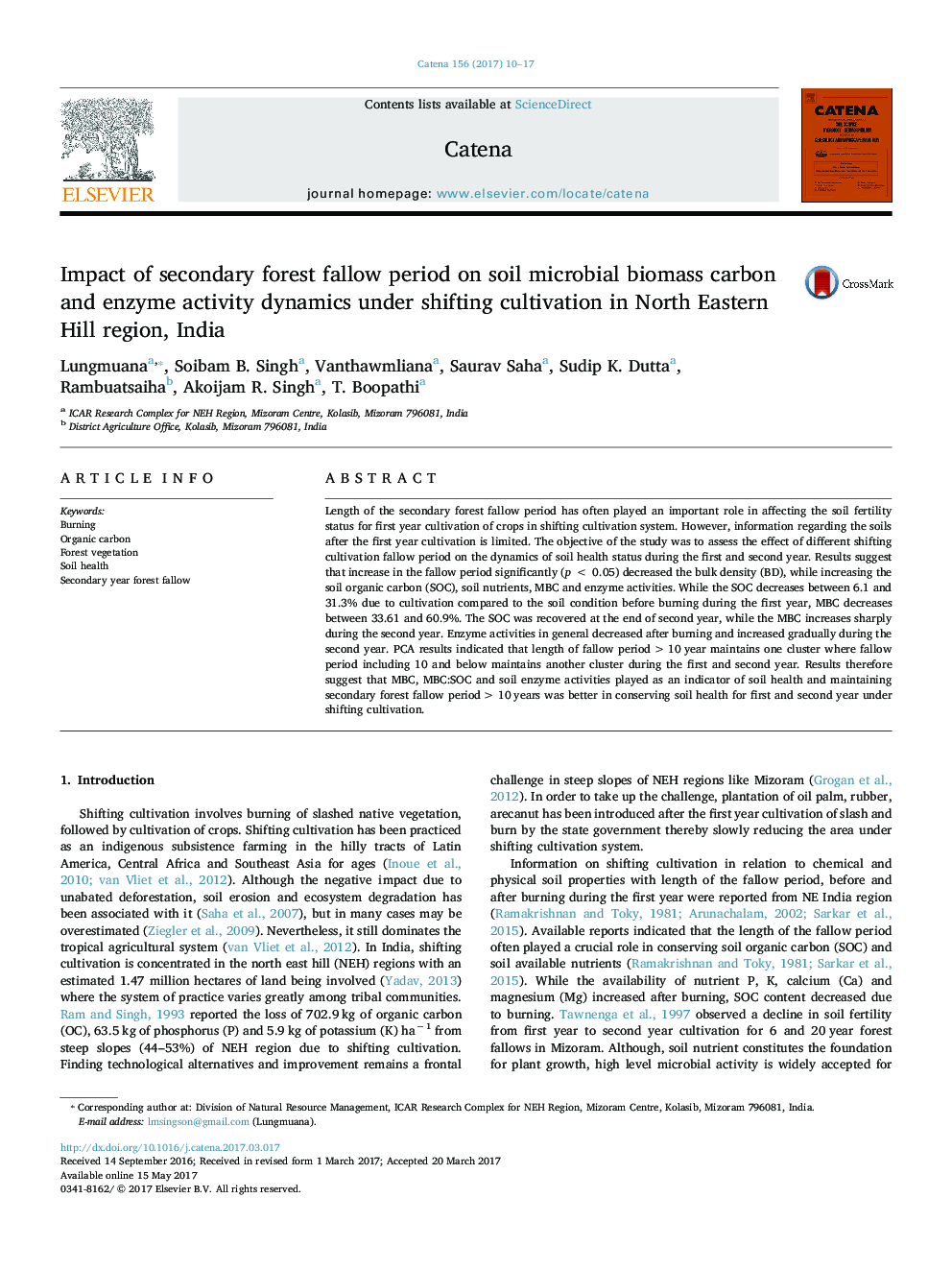| کد مقاله | کد نشریه | سال انتشار | مقاله انگلیسی | نسخه تمام متن |
|---|---|---|---|---|
| 5769977 | 1629198 | 2017 | 8 صفحه PDF | دانلود رایگان |
- Lengthening forest fallow period decreased bulk density and increase total N, total P, SOC, MBC and soil enzyme activities.
- SOC, MBC and soil enzyme activities decreased after burning.
- MBC and soil enzyme activities increased during second year without cultivation.
- Better soil health was observed due to forest fallow period >Â 10Â years.
Length of the secondary forest fallow period has often played an important role in affecting the soil fertility status for first year cultivation of crops in shifting cultivation system. However, information regarding the soils after the first year cultivation is limited. The objective of the study was to assess the effect of different shifting cultivation fallow period on the dynamics of soil health status during the first and second year. Results suggest that increase in the fallow period significantly (p < 0.05) decreased the bulk density (BD), while increasing the soil organic carbon (SOC), soil nutrients, MBC and enzyme activities. While the SOC decreases between 6.1 and 31.3% due to cultivation compared to the soil condition before burning during the first year, MBC decreases between 33.61 and 60.9%. The SOC was recovered at the end of second year, while the MBC increases sharply during the second year. Enzyme activities in general decreased after burning and increased gradually during the second year. PCA results indicated that length of fallow period > 10 year maintains one cluster where fallow period including 10 and below maintains another cluster during the first and second year. Results therefore suggest that MBC, MBC:SOC and soil enzyme activities played as an indicator of soil health and maintaining secondary forest fallow period > 10 years was better in conserving soil health for first and second year under shifting cultivation.
Journal: CATENA - Volume 156, September 2017, Pages 10-17
